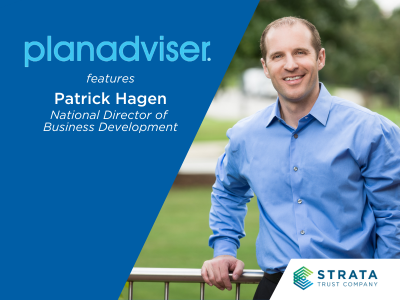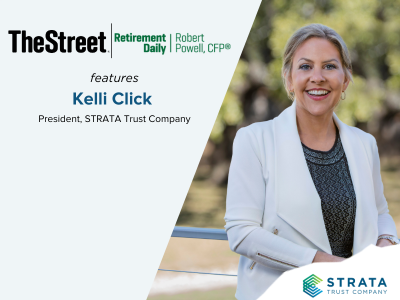Article originally published on TheStreet –
Private equity investments via self-directed individual retirement accounts allow investors to move money from publicly traded stocks, bonds or mutual funds into non-correlated options.
Within the universe of alternative assets, private equity offers a potentially appealing option for many investors. As a non-correlated investment, it isn’t tracked on an index like publicly traded stocks, bonds or mutual funds. Private equity can also take many forms, from a handful of people investing in an LLC to a private venture capital fundraising $10 million in $50,000 increments, to private hedge funds, startup banks or private real estate investment trusts.
Typically, the clients I see investing in private equity via self-directed individual retirement accounts
(SDIRAs) are fairly well off and have decent-sized retirement plans, including a 401(k), IRA or both. They pull out a percentage of the money that they’ve previously invested in the market and put it into a private equity investment not only because they think it is good investment but also because it’s non-correlated.
Often, the portion of a portfolio these clients allocate to an SDIRA for alternative investments like private equity is only about 10-30%. A typical investment might be in the range of $50,000.
Private equity possibilities
For any private equity investment, the primary benefit is that it likely has greater upside potential than a company that has already gone public. At one point, even Facebook was a privately held company. Anyone can now invest in it, but the return on that stock today is much less than if you had invested on the ground level.
From a structural standpoint, I’ve seen some venture capital funds utilize client dollars to seed 15-20 different private companies. So instead of putting $50,000 into one company and hoping it becomes profitable, you can put money into a fund managed by a venture capital firm that is actively researching and analyzing deals, and then picking its preferred companies to seed. The chances of at least one of those companies providing a solid return to the overall fund is likely a lot better than if you rely on a single company.
This concept is similar to a mutual fund that’s publicly traded on the market and might include stocks, bonds and other mutual funds. There could be some assets within the fund that do well and others that don’t, but you hope that diversification will create a net gain over time.
In the case of private startup banks, I’ve seen instances where smaller banks have been acquired by larger banks over the years, receiving substantial payouts. So a private bank investment early on can become very successful 10 or 15 years down the road.
Private banks also must provide a value every quarter to regulators in their state of registration, so an investor in a private bank would see a steady indication of that potential return. With a private venture capital fund that might not update its value for three years, the potential return can be a little harder to discern. It might look like a stagnant investment on paper for a long time and then suddenly payout significantly when there’s an exit.
For direct investment in real estate, the return will completely hinge on the project itself. Most of my clients who invest in real estate deals know that industry pretty well. They’re likely already investing in it through their personal finances and decide to utilize some of their IRA for that purpose as well.
Limited liquidity
Liquidity is definitely a factor to consider if you’re thinking about investing in private equity. For any publicly traded investment, there’s a maximum three-day settlement period if you need to access the cash value for whatever reason. But with a private equity fund, liquidity is typically subject to one of two factors: 1) the investment sponsor’s willingness to allow the investor to exit, or 2) the client’s ability to find an unrelated third-party who will buy the investment from them. With the latter, the investment sponsor must approve the sale.
Both of these options can be somewhat challenging, and people who have shied away from SDIRAs might be concerned about putting all their money in private equity and then needing to access some of it to pay health care expenses, for example. But liquidity in an SDIRA is often less of an issue than you might think, due to the fact that many people only allocate about 10-30% of their total portfolio to a self-directed account, so there’s plenty of liquidity to access from other sources if needed.
Due diligence
That said, it’s key to keep different potential scenarios in mind as part of your planning process. Some private equity funds have two-year maturities, while others might be five, seven or 10 years. So as an investor, it’s important to consider whether you might need the funds during that time frame or are comfortable with the idea of essentially tying them up for the specified period.
You should also analyze the underlying investments. With a publicly-traded stock, bond or mutual fund, a financial advisor is typically screening the investments for you and determining how well they might fit your portfolio. But with an SDIRA, the client typically must do that on their own. If the client is not working with an RIA, this due diligence process involves consulting with legal and/or tax advisors.
There are some independent, fiduciary RIAs who recommend alternatives to their clients, but only about 5% of the SDIRA clients I work with have been referred by an RIA. The other 95% tend to be fairly sophisticated, high-net-worth, accredited investors. They’ve identified the alternative investment opportunity, done the appropriate research, had a discussion with the investment sponsor, and decided they want to pursue this opportunity by allocating some of their retirement funds toward it.
Private placement memorandum
Almost any private equity company that’s raising capital will provide a private placement memorandum (PPM), which might range from 15-75 pages depending on the attorney who compiles it. Anyone thinking about putting money into an investment that has a PPM should closely analyze this document, in order to understand what the company will do with the capital, as well as the anticipated time frame and projected returns, so they can make an informed decision.
Clients being referred by an RIA can rely on that advisor to analyze the PPM and assess the investment’s appeal in accordance with their fiduciary responsibility. But if there’s no RIA in the equation, a client must make that call personally. They’re essentially saying, “I’ve analyzed the offering, done my due diligence on the sponsor and key decision-makers within that investment, and decided I want to allocate capital toward it.”
Dispelling cloud of confusion
It’s important to emphasize the relative simplicity of investing in private equity specifically, and alternative investments generally, through an SDIRA. I think a cloud of confusion may exist to some degree among investors, along with a perspective that self-directed investing in any assets outside the traditional market is dangerous, or perhaps challenging, expensive or tedious.
The reality of setting up an SDIRA and making investments through the account is quite different. In most cases, a client does need to make the decision without being guided by an advisor, and the due diligence can be quite tedious at times, but the actual mechanics shouldn’t pose any roadblock once that conclusion is reached. Many companies now execute alternative investment transactions via SDIRAs, with some employing great turnkey technology to simplify the process as much as possible. So this isn’t challenging or even particularly exotic. There are just some nuances that distinguish it from holding a publicly traded asset.
In summary, I believe the misconception that IRAs or 401(k)s automatically translate to publicly traded investments should be broken. It’s just not the case, because you can self-direct and invest in alternatives, and the process is open to many more people than it used to be. Investors who recognize this can appropriately consider alternative investments generally and private equity specifically as options that might be very attractive.
The information provided in this article is educational content and not investment, tax or financial advice. You should consult with a licensed professional for advice concerning your specific situation.
About the author: Patrick Hagen
Patrick Hagen is the national director of business development at STRATA Trust Company. He has over 15 years of professional experience with SDIRAs. Through his work, he helps to educate investors and financial advisors, raising awareness of SDIRAs and alternative investments.













